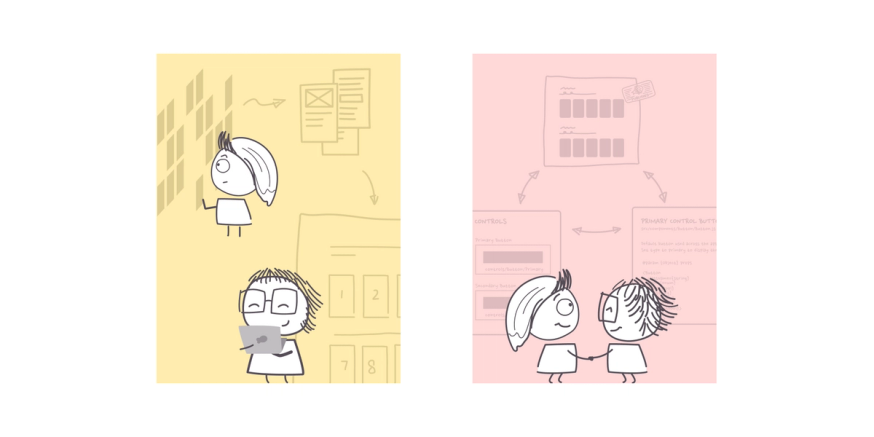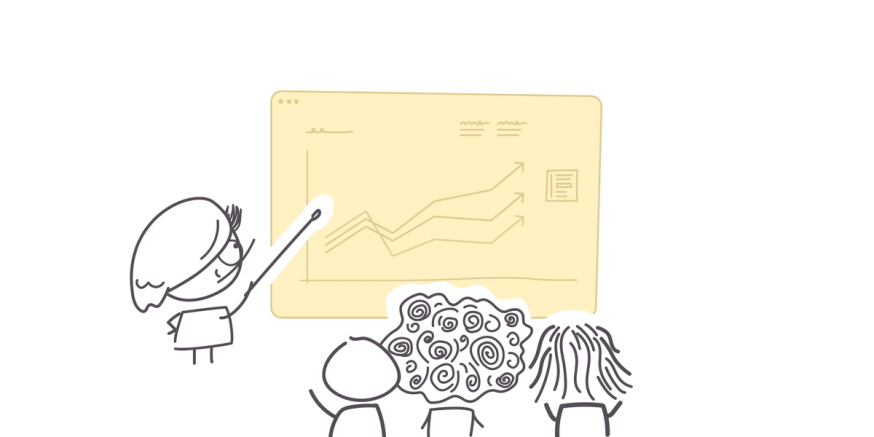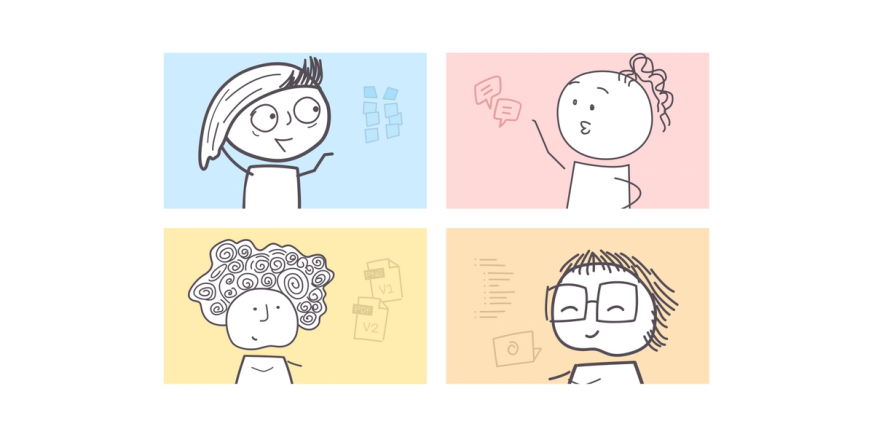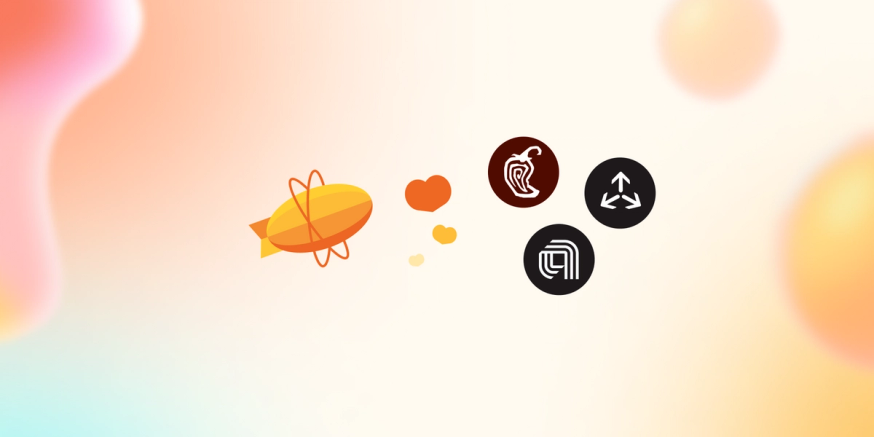What do a digital agency, an enterprise tech company, and a fast-casual restaurant chain have in common? They all have to design and build digital experiences to delight their customers! To ensure these experiences not only are beautiful but also deliver value, they all have to rely on best practices for their design-to-development workflows to:
- foster collaboration between teams
- automate processes for faster delivery
- drive scale for their organizations
At Harmony, Zeplin's user summit, we brought together a panel of industry experts to learn how design happens within their multifunctional teams. Specifically, we wanted to learn how they overcome challenges in the industries they work in, what's unique about their design-to-development workflows, and the keys to their teams' success.
Meet the panelists
- Sophia ‘Puff’ Story - Co-founder at 3 Sided Cube, an app development and digital production agency focused on changing lives for the better by designing and building technology for good.
- YuTing Wang - Senior UX Designer at Applied Materials, a global leader in manufacturing equipment for semiconductor and display industries.
- Limzer Lagrimas - Senior UX Designer of 15+ years, currently working at an American fast-casual restaurant a lot of us are familiar with: Chipotle Mexican Grill.
Let's dive into what designing is like in each of these unique spaces and how they use Zeplin to deliver designs efficiently.
How design processes differ across industries
Industries can have a major impact on the way teams iterate, design, and build. So what can we learn from Sophia, YuTing, and Limzer's team's experiences?

Nonprofit organizations are risk-averse
Because of 3 Sided Cube's mission, Sophia's team works heavily in the nonprofit sector. Clients in this space tend to be risk-averse, which brings an interesting challenge to Sophia and her team. They’re always looking for ways to try something new while still respecting the needs of their clients.
Nonprofit organizations typically like proven methods of design compared with other sectors but tend to be more collaborative and happy to share what works and what doesn't. It's a balancing act between change and continuity.
Technical industries must meet complex user needs
What makes the semiconductor space so unique is the sheer amount of information to put on a screen and the number of configurations available to the customers. YuTing says designers in her industry and at Applied Materials need to think through how to display complex information while considering the needs of each buyer persona.
When you buy a t-shirt online, you choose the size and quantity and go through checkout — but imagine if the seller can let the customer tweak everything down to the fabric, colors, and patterns. For a designer, that's a lot of production time. Every layer adds complexity to the buying experience, so it's challenging but rewarding. I'm constantly turning something complex into something intuitive and user-friendly.
Food and consumer industries are fast-paced and must provide a personalized experience
When new menu items are constantly launched, optimizing internal and external tools is always top of mind. What Limzer has learned is that, particularly for this space, personalization is key to a good user experience.
Personalization is the current trend in the food industry, and being able to iterate quickly to improve the user experience. If someone is a vegan, they should be shown vegan options in the Chipotle app, and design needs to work quickly to get this to development. It's all about utilizing information and data to give the user what's most important to them.
Measuring the impact of design
Each industry brings with it different priorities and different ways of measuring impact, so we also talked about how our panelists measure the impact of their designs and what tools they use to help them along the way.

Optimizing for outcomes is key to design and development
At the heart of everything they do, Sophia says the focus is on outcomes and impact.
When starting a project, it's important to keep the big picture in mind. It's not just about making a design change but also considering the impact on development and the overall product.
For example, while the Red Cross mobile app may measure the number of blood donation appointments booked each month, the true impact is the number of lives saved thanks to those appointments. That's the goal, and it's what drives them to do what they do.
Every project and client is unique, so they spend a lot of time examining data and looking for ways to optimize outcomes. It's a continuous process, but one that's essential for achieving real impact.
Zeplin as a tool for sharing results and measurable KPIs
YuTing loves using Flows in Zeplin to map out the current user journey. The designers look at every step and touchpoint the user takes to complete a task, then get together as a wider team to identify the issues or friction points that need fixing. It's a great opportunity for them to work together and make improvements.
Once they've made changes, they evaluate the impact on the user's journey and see if they're getting closer to the desired outcome. It's important to clearly communicate these changes to other stakeholders, too, and Flows makes it easier for them to present the entire user journey.
Zeplin is a great way to share results and measurable KPIs that we're presenting with stakeholders.
Zeplin as the source of truth for cross-team collaboration
Zeplin has been a major part of Chipotle's design-to-development workflow. They use Zeplin to deliver wireframes, high-fidelity designs, and information architecture to developers who appreciate understanding how features work.
After handoff, all communication happens in Zeplin, where team members can leave comments and tag each other, streamlining collaboration. The labeling feature in Zeplin is highly valued by the team — it helps them keep track of their progress, using the "Design" label for UI, "Development" label for build, and "Discover" label for completed UX work. Zeplin serves as the single source of truth for the entire company to view the design work that will be built.
Devs want to know, 'What does this do when this happens?’ Zeplin is great because we include the information architecture along with the wireframes, UI, and high-fidelity designs. Utilizing Zeplin as our handoff tool has been highly helpful.
Industry-driven collaboration
Your workspace can influence how you learn, grow, and communicate with your users and customers. Let's find out how collaboration differs across 3 Sided Cube, Applied Materials, and Chipotle.

With so many roles and teams across design agencies and their clients, open communication is a must for design collaboration
Working on the agency side means everyone takes on different roles. Sophia says collaboration is key between teams, but clients may have their own internal teams with different ways of communicating.
The focus is on continuous improvement and adjusting to client needs, learning from them, and vice versa. Open-mindedness is key to building strong relationships between teams and with clients.
Make continuous communication and knowledge-sharing a top priority if your team is remote and distributed
Working as a fully remote team can be challenging, especially when everyone is in different time zones. That's why communication is a top priority at Applied Materials. They make sure to have daily standups to stay in sync and address any issues or concerns together.
Many designers have backgrounds in art, design, or related fields, but not necessarily in semiconductors. It's been a huge learning curve for our designers, but we've been fortunate to have so many knowledgeable people on the team willing to educate each other along the way. It's been a collaborative effort where we all grow together.
Have a well-defined process for collaboration, and take advantage of multiple communication methods to stay aligned
Limzer credits having a variety of communication options available for making it easy to collaborate with everyone on the team at Chipotle.
With our internal chat, email, voice messages, and Kanban boards, this has helped us with the hybrid working system, and communication is something we really utilize and have a process around so everyone is on the same page and we can get through sprints easily.
Although design might differ across industries, one thing is certain — collaboration, automation, and scale are the foundation for creating a design-to-development workflow that spans every team and organization.
Watch this session and others from Harmony to learn how teams can work together more efficiently to build beautiful products together. If you'd like to learn how Zeplin can help your design delivery process, contact us today.




